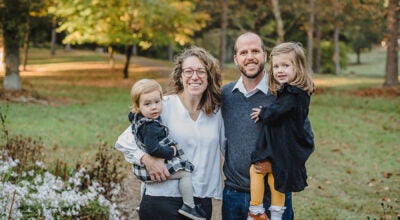Ga. Civil War camp turns up hundreds of artifacts
Published 12:00 am Tuesday, May 28, 2013
SAVANNAH, Ga. (AP) — In just three years of field work, researchers have turned up more than 600 artifacts — from suspender buckles to railroad spikes — at the site of a Civil War prison camp in southeast Georgia that remained virtually undisturbed since it was abandoned in 1864.
And that’s only scratching the surface.
Students and faculty from Georgia Southern University have plans this summer to dig deeper at Camp Lawton, a sprawling prison where the Confederate army once held more than 10,000 captured Union troops. But first they’re using cellphone chargers and a veterinarian’s X-ray machine to help with the painstaking work of cleaning and preserving items already uncovered.
“It’s an incredible amount of material they’ve recovered so far, but I really do think it’s just scratching the surface,” said Lance Greene, an anthropology professor at the Statesboro campus who’s overseeing students’ work at Camp Lawton. “We think starting in the summer we’ll have a lot more artifacts coming into the lab.”
Opened in October 1864 near Millen, 50 miles south of Augusta, Camp Lawton was built to replace the infamously hellish and overcrowded Confederate prison camp at Andersonville. The new camp sprawled over 42 acres, roughly 1/4 mile on each side, yet it became a largely forgotten footnote in Civil War history. That’s because Camp Lawton lasted just six weeks before its Confederate officers emptied the prison and fled to avoid the advancing army of Union Gen. William T. Sherman.
In 2010, a Georgia Southern graduate student stunned the pros when he found remnants of Camp Lawton’s stockade wall. Almost immediately, the site began yielding artifacts that help tell the stories of the soldiers stationed at the camp and their prisoners — a bronze buckle used to fasten tourniquets during amputations, a tobacco pipe with teeth marks in the stem, a picture frame folded and kept after the daguerreotype it held was lost.
Greene estimates between 600 and 700 items have been unearthed at the site during periodic surveys in the three years since its discovery. Many of those treasures are metal items — small buttons, a large hammerhead, spoons and forks — covered in rust that needs to be carefully removed so the artifacts aren’t lost to corrosion.
In a lab on campus, archaeology students are giving artifacts a bath in four plastic tubs filled with water, baking soda and a weak electric current from a cellphone charger to get rid of the rust. So much needs cleaning that Greene is running a fifth electrolysis bath at his home.
Meanwhile, a local veterinarian’s office is donating use of its X-ray machine for looking inside rust-covered items to see how much of the original metal remains. If some small objects are almost entirely rust, a cleaning would destroy them, said Matt Newberry, a graduate student in archaeology and anthropology who’s working on the Camp Lawton project. He said a technician at the vet’s office helped the students tinker with the X-ray to find the best settings for examining suspender buckles and other small items.
“Their settings are for dog or cat or bird, so we had to play with it a little bit,” Newberry said. “And it turns out the best setting is for a bird.”
The cleaned and preserved artifacts will eventually go on display at a public museum the state Department of Natural Resources is preparing at Magnolia Springs State Park, where the prison camp was located. David Crass, director of the DNR’s Historic Preservation Division, said the museum should be open by late summer or early fall.
The Georgia Southern crew hopes to finish cleanup work by late June, when the school’s archaeology faculty and students will begin five weeks of summer fieldwork at Camp Lawton expected to add many more Civil War artifacts to the growing collection.
For the first time, Greene said, teams will start digging deeper in areas where Union prisoners lived in crude huts and are believed to have abandoned most of their belongings when the Confederacy evacuated the camp. They also plan to search for Camp Lawton’s barracks, officer’s quarters, hospitals and other buildings that would have been built outside the prison camp’s stockade walls .
“There’s a lifetime’s worth of work here,” Greene said. “I can see that I would retire still working there because it’s such an incredible site and so well preserved.”





